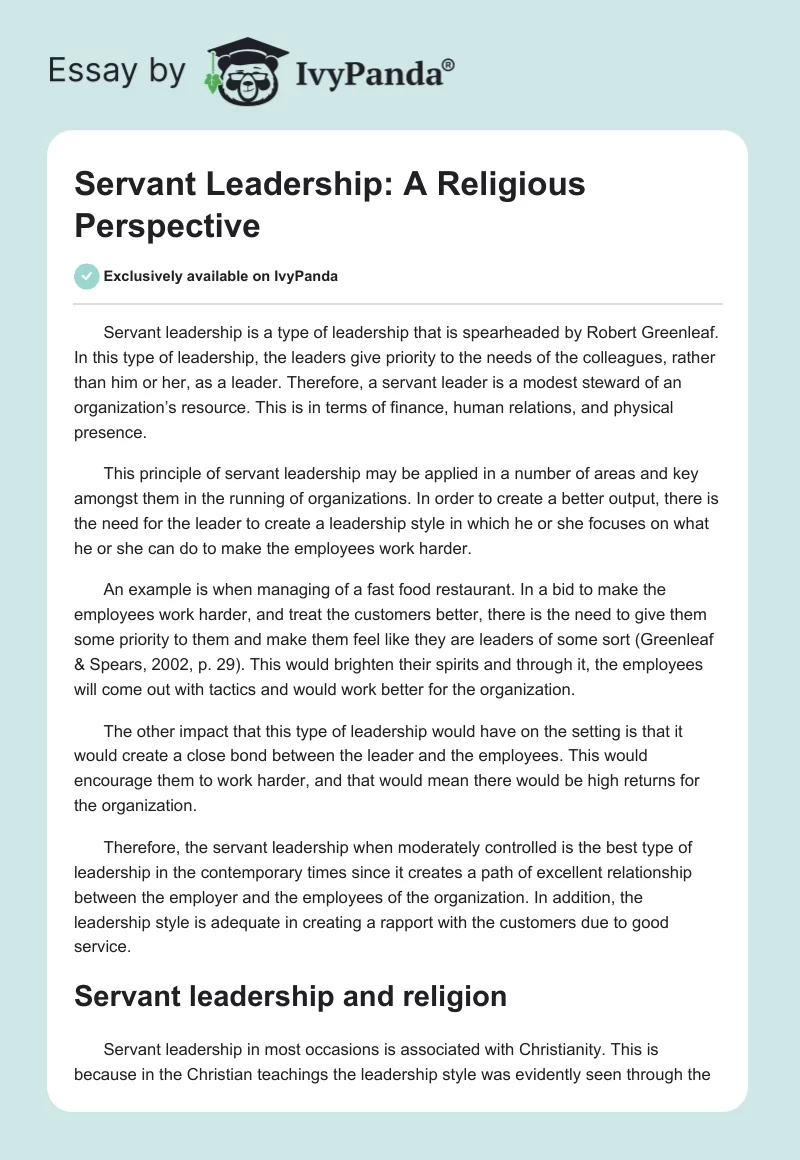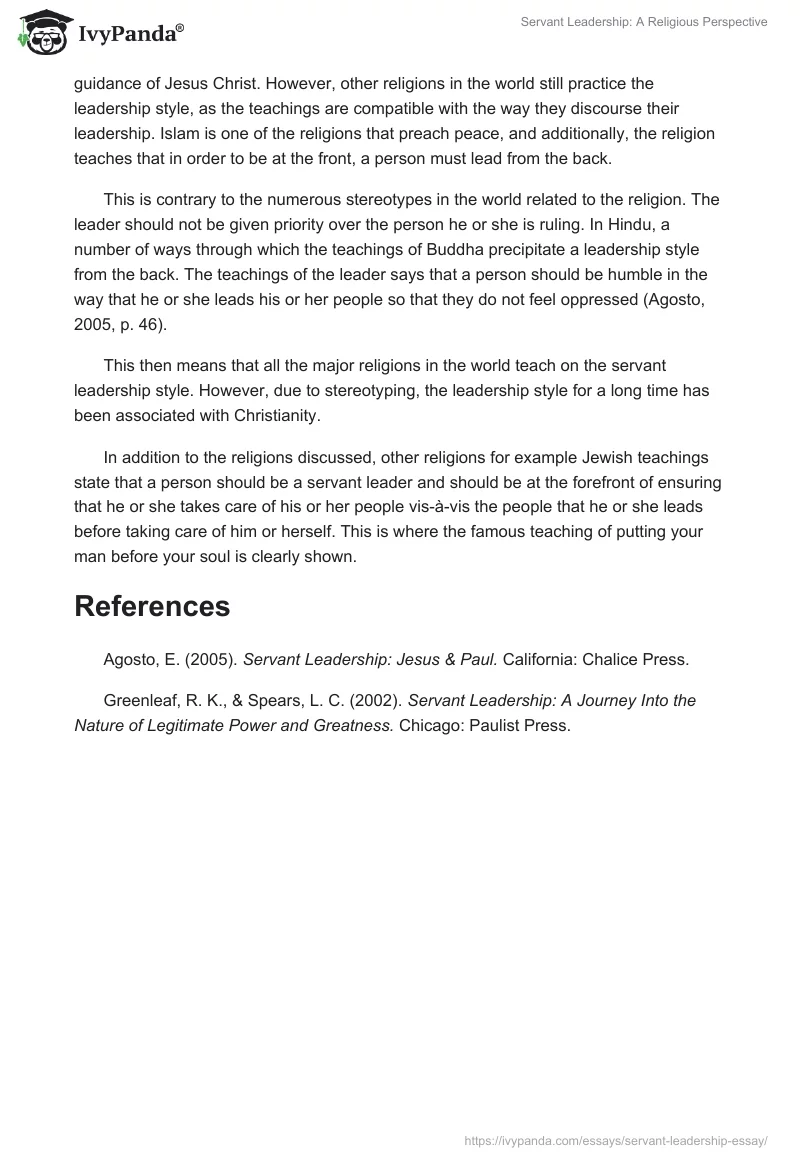Servant leadership is a type of leadership that is spearheaded by Robert Greenleaf. In this type of leadership, the leaders give priority to the needs of the colleagues, rather than him or her, as a leader. Therefore, a servant leader is a modest steward of an organization’s resource. This is in terms of finance, human relations, and physical presence.
This principle of servant leadership may be applied in a number of areas and key amongst them in the running of organizations. In order to create a better output, there is the need for the leader to create a leadership style in which he or she focuses on what he or she can do to make the employees work harder.
An example is when managing of a fast food restaurant. In a bid to make the employees work harder, and treat the customers better, there is the need to give them some priority to them and make them feel like they are leaders of some sort (Greenleaf & Spears, 2002, p. 29). This would brighten their spirits and through it, the employees will come out with tactics and would work better for the organization.
The other impact that this type of leadership would have on the setting is that it would create a close bond between the leader and the employees. This would encourage them to work harder, and that would mean there would be high returns for the organization.
Therefore, the servant leadership when moderately controlled is the best type of leadership in the contemporary times since it creates a path of excellent relationship between the employer and the employees of the organization. In addition, the leadership style is adequate in creating a rapport with the customers due to good service.
Servant leadership and religion
Servant leadership in most occasions is associated with Christianity. This is because in the Christian teachings the leadership style was evidently seen through the guidance of Jesus Christ. However, other religions in the world still practice the leadership style, as the teachings are compatible with the way they discourse their leadership. Islam is one of the religions that preach peace, and additionally, the religion teaches that in order to be at the front, a person must lead from the back.
This is contrary to the numerous stereotypes in the world related to the religion. The leader should not be given priority over the person he or she is ruling. In Hindu, a number of ways through which the teachings of Buddha precipitate a leadership style from the back. The teachings of the leader says that a person should be humble in the way that he or she leads his or her people so that they do not feel oppressed (Agosto, 2005, p. 46).
This then means that all the major religions in the world teach on the servant leadership style. However, due to stereotyping, the leadership style for a long time has been associated with Christianity.
In addition to the religions discussed, other religions for example Jewish teachings state that a person should be a servant leader and should be at the forefront of ensuring that he or she takes care of his or her people vis-à-vis the people that he or she leads before taking care of him or herself. This is where the famous teaching of putting your man before your soul is clearly shown.
References
Agosto, E. (2005). Servant Leadership: Jesus & Paul. California: Chalice Press.
Greenleaf, R. K., & Spears, L. C. (2002). Servant Leadership: A Journey Into the Nature of Legitimate Power and Greatness. Chicago: Paulist Press.


